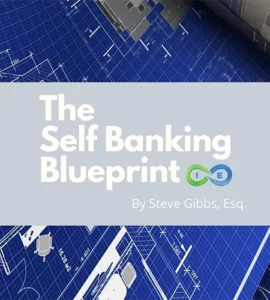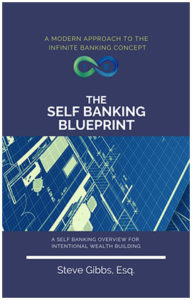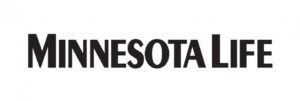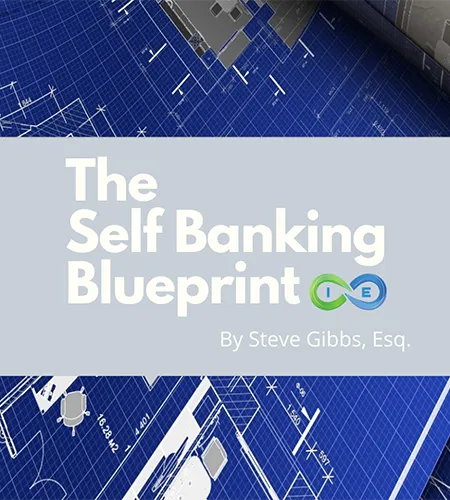How to Build Tax-Advantaged Wealth Using Overfunded Life Insurance Strategies
Are you looking for a powerful strategy to grow and preserve wealth while enjoying tax advantages? Overfunded life insurance provides a unique opportunity to maximize cash value accumulation in a tax-favored environment while maintaining the traditional benefits of life insurance protection.
In this comprehensive guide, we’ll explore what it means to “overfund” life insurance and help you determine if this wealth-building strategy aligns with your financial goals.
What is Overfunded Life Insurance?

Overfunded life insurance (OLI) is a strategic approach to permanent life insurance where you intentionally pay more premium than required to maintain the death benefit. This additional funding dramatically accelerates the policy’s cash value growth, creating a powerful financial tool that combines life insurance protection with tax-advantaged wealth accumulation.
Often referred to as a LIRP (Life Insurance Retirement Plan), overfunded policies are specifically designed to maximize early cash value accumulation while providing asset protection and significant tax benefits.
Types of Policies That Can Be Overfunded
Overfunded life insurance typically utilizes permanent coverage options such as:
- Indexed Universal Life (IUL) – Links growth to market indices with downside protection
- Whole Life Insurance (WL) – Offers guaranteed cash value growth plus potential dividends
Both policy types allow you to contribute additional cash beyond the required premiums, immediately boosting the policy’s cash value. This added value grows tax-free in the cash value account and remains accessible through withdrawals or policy loans.
The Self Banking Blueprint
A Modern Approach To The Infinite Banking Concept
How Overfunded Life Insurance Works
The fundamental concept behind overfunded life insurance is maximizing premium payments while minimizing the death benefit (within legal limits). This approach ensures that the majority of your premium dollars flow directly to the cash value component rather than paying for insurance costs.
The Critical Importance of Policy Design
How your overfunded life insurance policy is structured will ultimately determine its effectiveness. The key factors include:
- Balancing base premium and paid-up additions (particularly for whole life)
- Minimizing the death benefit relative to premium (while maintaining tax advantages)
- Avoiding MEC (Modified Endowment Contract) status to preserve tax benefits
- Selecting the appropriate riders to enhance policy performance
Working with an agent who specializes in designing cash value-focused policies is essential. The right structure creates efficiency that maximizes your policy’s lifetime cash value growth potential.
Top 12 Benefits of Overfunded Life Insurance

1. Tax-Favored Growth
Funds within your overfunded life insurance policy’s cash value grow income tax-free. This tax-sheltered compound growth allows your money to accumulate significantly faster than in taxable accounts, creating a powerful wealth-building engine for long-term financial goals.
The tax-free environment means your money can experience true compound interest growth without the annual drag of taxation slowing its progress.
2. Dividend Payments
Overfunded dividend-paying whole life insurance policies provide annual dividend distributions that can be:
- Taken as cash
- Used to purchase additional paid-up insurance (increasing both cash value and death benefit)
- Left to accumulate interest
- Applied to reduce premium payments
These dividends, while not guaranteed, have been consistently paid by top mutual insurance companies for over 100 years, even through economic depressions.
3. Flexible Investment Options
Depending on your policy type, you’ll have various options for how your cash value grows:
- Indexed Universal Life – Allows allocation to subaccounts linked to market indices like the S&P 500 or NASDAQ 100
- Variable Universal Life – Offers direct investment in securities through subaccounts
- Whole Life – Provides guaranteed growth plus potential dividends in the insurance company’s general account
This flexibility allows you to customize your policy’s growth potential based on your risk tolerance and financial objectives.
4. Market Downside Protection
One of the most compelling benefits of certain overfunded life insurance policies is protection from market losses:
- IUL policies feature built-in floors (typically 0-1%) that prevent your account from losing value during market downturns
- Whole life policies offer contractually guaranteed annual increases regardless of market performance
- VUL policies provide greater upside potential but lack the same downside protection
This protection creates a unique financial vehicle that can capture a portion of market gains while eliminating the risk of market losses.
5. No Contribution Limits
Unlike qualified retirement plans with strict annual contribution caps, overfunded life insurance policies allow you to contribute significant amounts based on:
- Your insurable interest (related to income and existing insurance)
- MEC (Modified Endowment Contract) guidelines that prevent excessive funding relative to the death benefit
- Age-based qualification factors
This flexibility makes overfunded life insurance particularly valuable for high-income earners who have maxed out their traditional retirement accounts and seek additional tax-advantaged savings opportunities.
6. Tax-Free Loans and Withdrawals
You can access your policy’s cash value through:
- Tax-free withdrawals up to your basis (the amount you’ve contributed)
- Tax-free policy loans using your cash value as collateral
This accessibility creates a valuable source of tax-free retirement income or funds for major purchases, business opportunities, or emergency needs.
7. No Age-Based Liquidity Restrictions
Unlike qualified retirement accounts that typically impose penalties for withdrawals before age 59½, overfunded life insurance allows you to access your money at any age without government penalties.
While some policies (particularly universal life) may have surrender charges in the early years, these are contractual rather than regulatory and diminish over time.
8. State Asset Protection
In many states, the cash value and death benefit of life insurance policies receive significant protection from creditors and legal judgments. This protection varies by state, so it’s important to understand your specific state’s provisions.
This asset protection feature creates a financial safe haven that few other investment vehicles can match.
9. Tax-Free Death Benefit
Beyond the living benefits, overfunded life insurance provides a tax-free death benefit to your beneficiaries. This creates an efficient wealth transfer mechanism that bypasses probate and delivers an immediate financial legacy.
10. Disability Protection
Many overfunded policies offer optional disability waiver of premium riders that continue your premium payments if you become disabled and unable to work.
This feature effectively transforms your life insurance into disability protection, ensuring your policy remains intact during periods of income loss.
11. Living Benefits for Chronic or Terminal Illness
Modern policies frequently include or offer optional chronic illness riders and long-term care benefits that allow early access to a portion of your death benefit if you experience qualifying health conditions.
These living benefits provide financial protection beyond traditional life insurance, creating a comprehensive financial safety net.
12. Privacy
Unlike many financial instruments, your overfunded life insurance policy details remain private:
- Cash value amounts
- Death benefit
- Policy loans
- Beneficiary designations
This privacy extends to credit checks and public records, providing a confidential wealth-building strategy.
Potential Drawbacks to Consider
While overfunded life insurance offers numerous advantages, it’s important to understand the potential limitations before implementing this strategy.
Higher Initial Fees
Permanent life insurance policies typically have higher upfront costs than term life insurance. These costs include:
- Agent commissions
- Administrative fees
- Cost of insurance charges
These fees impact early cash value growth, which is why overfunded policies are generally most appropriate for long-term planning horizons (10+ years) when the impact of fees diminishes over time.
Surrender Charges
Some overfunded policies, particularly universal life variants, impose surrender charges for excessive withdrawals during the early policy years (typically 10-15 years). While properly structured policies minimize these concerns, understanding the surrender schedule is important when planning liquidity needs.
Whole life policies generally have fewer surrender concerns but may have lower early liquidity.
Policy Lapse Risk
When borrowing against your policy, careful management is required to prevent policy lapse. If your policy lapses with outstanding loans:
- Your life insurance coverage terminates
- The borrowed amount may become immediately taxable
- You lose the future tax-advantaged growth potential
Proper policy management can mitigate this risk, but it requires vigilance and understanding of how policy loans work.
The Self Banking Blueprint
A Modern Approach To The Infinite Banking Concept
Who Should Consider Overfunded Life Insurance?
While not appropriate for everyone, certain individuals stand to gain significant benefits from an overfunded life insurance strategy.
Infinite Banking Practitioners
Those interested in the Infinite Banking Concept can use overfunded whole life policies as the foundation of their personal banking system. This approach allows you to:
- Create a pool of capital that grows tax-free
- Borrow against your policy for investments or major purchases
- Pay yourself back with interest, creating a circular financing system
- Build multi-generational wealth through proper policy design
High-Income Professionals
Overfunded life insurance offers particular value for:
- Business owners
- Medical professionals
- Corporate executives
- Legal professionals
- High-income earners who have maxed out traditional retirement accounts
These individuals often face retirement planning challenges due to income limitations on qualified plans and can benefit from the unlimited contribution potential of properly structured life insurance.
Late-Start Retirement Planners
If you’ve delayed retirement savings and need to accelerate your accumulation phase, overfunded life insurance provides a vehicle to set aside significant sums without the contribution limits of qualified plans.
This “catch-up” capability, combined with tax-free growth and distribution potential, has earned cash value life insurance the nickname “Rich Man’s Roth.”
Conservative Investors Seeking Upside Potential
Overfunded policies (particularly IUL) appeal to investors who want:
- Protection from market losses
- Potential to participate in market gains
- Tax-advantaged growth
- Asset protection benefits
This combination makes it an effective diversification strategy for those with significant market exposure through other investments.
Real-World Example: Jim Harbaugh’s $14 Million Strategy
A prominent example of overfunded life insurance in action comes from Jim Harbaugh’s contract as a college football coach, which utilized an innovative compensation structure involving life insurance.
According to USA Today, his compensation package included an overfunded indexed universal life (IUL) policy as part of a split-dollar loan arrangement.
How Harbaugh’s Strategy Works:
- The University of Michigan agreed to pay $14 million in loan advances into an overfunded IUL policy ($2 million annually for 7 years)
- The policy builds tax-free cash value based on market index performance
- Harbaugh can access tax-free income from the policy (estimated at $1.4 million annually starting at age 66)
- The policy loan remains outstanding until his death
- His beneficiaries receive the remaining death benefit after the loan repayment
This sophisticated approach demonstrates how overfunded life insurance can be leveraged to create substantial tax-advantaged retirement income while providing family protection.
How to Structure an Overfunded Life Insurance Policy
Creating an effective overfunded life insurance policy requires careful design and implementation.
Key Structural Elements
- Minimize the base death benefit – The insurance component drives costs, so keeping it as low as legally permitted maximizes cash value efficiency
- Maximize paid-up additions – For whole life policies, paid-up additions create immediate cash value with minimal insurance expense
- Stay below MEC limits – Exceeding the 7-pay test turns your policy into a Modified Endowment Contract, reducing tax advantages
- Consider optimal premium schedules – Some policies perform better with level premiums, while others benefit from front-loading
Working With a Specialist
Designing an overfunded policy requires specialized knowledge. Your agent should:
- Understand the TAMRA (Technical and Miscellaneous Revenue Act) guidelines
- Have experience creating high cash value policies
- Provide detailed policy illustrations showing multiple scenarios
- Explain the tradeoffs between different design options
Frequently Asked Questions
Is overfunded life insurance better than a 401(k) or IRA?
Overfunded life insurance offers different benefits than qualified retirement plans and is best viewed as a complementary strategy rather than a replacement. The primary advantages include:
- No contribution limits (beyond MEC restrictions)
- Tax-free access at any age
- Tax-free death benefit
- Asset protection benefits
Ideally, maximize employer matches in qualified plans first, then consider overfunded life insurance for additional tax-advantaged growth.
How soon can I access cash value in an overfunded policy?
Access to cash value depends on policy structure:
- Whole life with paid-up additions – Can provide 60-90%+ first-year cash value
- IUL with appropriate riders – Can provide 50-80% first-year cash value
- Standard permanent policies – May take 5-10 years to break even on cash value
Properly designed overfunded policies maximize early liquidity through specific riders and funding techniques.
What happens if I stop paying premiums?
Options if you stop premium payments include:
- Reduced paid-up insurance – The policy continues with a lower death benefit
- Extended term insurance – Converts to term insurance for a specific period
- Policy loans – Borrow against cash value to pay premiums
- Partial surrenders – Withdraw some cash value to pay premiums
The specific options depend on your policy type and cash value amount.
Are there income limitations for overfunded life insurance?
While there are no income limits for policy ownership, your insurable interest (the amount of death benefit you qualify for) is tied to your income and net worth. Higher income generally allows for larger policies and thus greater funding potential.
What if interest rates rise significantly?
Different policy types respond differently to rising interest rates:
- Whole life – Dividend rates may increase over time
- IUL – Cap rates and participation rates may improve
- Universal life – Crediting rates typically increase
Most policies have mechanisms to capture higher interest rates over time, though the response may lag behind market changes.
Conclusion
Few financial vehicles offer the unique combination of benefits found in overfunded life insurance. From tax-advantaged growth and access to asset protection and wealth transfer, these policies create a versatile financial tool that can serve multiple planning objectives.
If you’re seeking a safe asset class, alternative retirement income, or want to implement banking strategies using life insurance, an overfunded cash value policy offers a powerful solution to help achieve financial independence and security.
At I&E, we specialize in creating optimally designed overfunded life insurance policies tailored to your specific needs and objectives. Reach out to one of our Pro Client Guides or call us today for a complimentary strategy session to discover what an overfunded life insurance strategy can do for your financial future.
The Self Banking Blueprint
A Modern Approach To The Infinite Banking Concept





14 comments
Tommy Davidson
I will be turning 69 soon, Is this strategy available or beneficial for older persons?
SJG
Hi Tommy and thanks for commenting. The short answer is yes, there are options depending on health and situation for someone who is age 69. The way to know for sure is to connect for a video conference and see what is available given your situation. To get started, connect with our Pro Team if you haven’t already by requesting a call from Denise Boisvert at denise@insuranceandestates.com.
Best, Steve Gibbs for I&E
Chris
Greetings,
I have done some research and was curious about payments after the full 5 years are funded. Do your payment go down… substantially?
The example I saw was that a client put in 40K for 5 years. Total of 200K. During those 5 years the insurance company did give him some interest credit of 200-400 a month but the insurance and “other charges” were more than the credit… the 4th and 5th year the cost was about $450 a month. It is my understanding that these early years we are pre paying the costs. If we are pre paying… what will the monthly cost drop to after it is fully funded? The rule of thumb I have heard is after 5-7 years your cash value will match the amount you originally put in. The only way I can see that happening is if amount credited every month is substantially higher than the cost the company pulls from your cash balance (like in the early years) or the costs per month go down. Which is more accurate?
Thanks for some clarification.. Chris
Insurance&Estates
Hey Chris, very fair and educated question. Unfortunately, the best way to get it answered is to connect with one of our experts and actually have illustrations run for your specific premiums, age, health rating, etc. Illustrations will show both the guaranteed and non-guaranteed cash accumulation at various time periods. A great first step is to request a call from Barry Brooksby at barry@insuranceandestates.com.
Best, Steve Gibbs for I&E
Daniel McManus
Hello! I’m very interested in OLI and would like to talk to someone about it. Thank you.
Daniel McManus
Insurance&Estates
Hello Daniel, thanks for connecting and a great way to schedule a conversation is to email Barry Brooksby at barry@insuranceandestates.com to request a meeting.
Best, Steve Gibbs for I&E
Paul Worachek
What is the max you can put into a whole life policy before it becomes a taxable event or a Modified endowment contract? Thanks, Paul
Insurance&Estates
Hello Paul, that number will depending largely on how the policy is designed. Best next step is to connect with our Pro Client guide team to get specific details based upon your goals and budget. You can email Barry to request a call at barry@insuranceandestates.com.
Best, Steve Gibbs for I&E
Bimal
Hi
I had build up sizable cash accumulation in employer provided GUL and then my employer changed their provider from A to B. This had forced me to withdraw funds from my cash accumulation account to the extent of cost basis given by provider A.
However at the end of the year, on 1099-R that I received Provider A has shown Taxable gain due to withdrawal of money from CAF.
How this works?
Regards
Insurance&Estates
Hello, thanks for commenting. Our expert in GULs is Jason Herring and you can reach him directly at jason@insuranceandestates.com.
Best, I&E
monica
info about overfunded whole life insurance policy (p.u.a.)
Insurance&Estates
Hello Monica, thanks for commenting. Feel to reach out to barry@insuranceandestates.com for in depth overfunded life insurance feedback.
Best, Steve Gibbs, for I&E
paricia jeffs
Interested in overfundedwhole life insurance. Need to know interest rate
Insurance&Estates
Hello Patricia, your question is a common one and the average right now for most life insurance companies is about 5%. I encourage you to dig deeper because there is a lot to consider in addition to interest rates, such as margin lock kinds of benefits. Let us know if you’d like to connect with Barry, our IBC expert.
Best, Steve Gibbs for I&E.